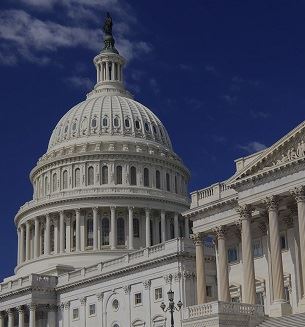Experienced Federal Appeal Attorneys: Competent Depiction for Complicated Cases
Experienced Federal Appeal Attorneys: Competent Depiction for Complicated Cases
Blog Article
Debunking the Process of Federal Appeals: What You Need to Know
Navigating the elaborate realm of federal allures can commonly appear like traversing uncharted waters for those strange with the procedure. Comprehending the subtleties of appellate court jurisdiction, the details of filing a notification of appeal, providing a compelling short, and making a persuasive dental debate are important parts that can considerably influence the outcome of a case. By deciphering the layers of intricacy surrounding federal appeals, individuals can acquire a more clear understanding into the mechanisms that control this critical point of the legal system.
Comprehending Federal Appeals Refine
Delving right into the detailed realm of the government appeals process reveals a systematic and organized journey through the judicial system. Federal charms function as a critical mechanism for assessing choices made by lower courts. Comprehending this process is necessary for anyone entailed in legal proceedings at the federal degree.
The process commonly begins with a party disappointed with a lower court's ruling filing a notification of charm. This sets off an evaluation by a greater court, where a panel of judges evaluates the lawful debates provided by both parties. Briefs outlining the legal reasoning behind each party's position are sent, and dental debates may be heard to clear up complex concerns.
The appellate court's choice is based on an extensive evaluation of the reduced court's procedures and the debates presented. When the appellate court reaches a choice, it can verify, reverse, remand, or customize the lower court's ruling, giving clarity and finality to the legal disagreement.
Appellate Court Jurisdiction Clarified
As we progress from understanding the federal allures procedure to studying the intricacies of appellate court territory, an essential aspect comes to light concerning the authority and limits of these greater courts in the legal landscape. Appellate court territory refers to the scope of cases that a particular appellate court has the power to determine and assess upon. Unlike high court that hear instances for the very first time, appellate courts are limited to assessing decisions made by reduced courts. These decisions can consist of judgments from both state and federal courts.
Appellate courts have territory over specific types of cases, generally those involving legal mistakes, step-by-step concerns, or inquiries of regulation instead of valid conflicts. The jurisdiction of appellate courts is usually laid out in laws and regulations that govern the court system. Understanding appellate court territory is vital for events associated with the allures process as it establishes whether a situation is qualified for evaluation and the degree to which the appellate court can intervene in the lower court's choice.
Declaring a Notice of Appeal
The initial action in commencing the government charms process entails filing a Notification of Appeal with the ideal appellate court. This vital record formally notifies the court and the other celebrations entailed in the situation that the appealing party means to look for a review of the reduced court's decision. Filing a Notification of Appeal is a stringent procedural demand that sets the appellate procedure moving.
When preparing the Notice of Appeal, it is vital to ensure compliance with the certain rules and standards of the pertinent appellate court. federal crime lawyer. The paper should normally consist of information such as the situation name, the lower court's name, the day of the judgment being appealed, and a concise statement suggesting the grounds for the allure

Rundown and Dental Disagreement
In the appellate procedure, offering written briefs and engaging in oral arguments play pivotal duties in promoting for the appealing celebration's setting before the appellate court. Briefs are comprehensive legal files that lay out the celebrations' debates, lawful authorities, and analysis supporting their placements. These created entries offer the court with an in-depth understanding of the realities of the situation, the relevant regulation, and why the appealing celebration believes the reduced court's choice need to be reversed.
Adhering to the entry and review of the briefs, dental debates provide the events a chance to further clarify their positions, address any questions the appellate courts might have, and highlight bottom lines from their composed briefs. Oral arguments are an opportunity for the attorneys to persuade the courts with spoken advocacy and actions to inquiries from the bench.
Both the written briefs and dental arguments are essential elements of the appellate procedure, permitting parties to present their case extensively and compellingly before the appellate court. - federal crime lawyer
Obtaining the Appellate Court Decision
Upon completion of dental arguments and entry of created briefs, the following pivotal stage in the appellate process involves waiting for the crucial ruling from the appellate court. This period of anticipation can be full of a mix of stress and anxiety and wish for celebrations involved in the charm. The appellate court's choice is normally supplied in a created layout and details the court's final thoughts on the lawful problems presented, the thinking behind their choice, and the judgment made. The time structure for obtaining the appellate court's decision can differ, but courts aim to offer prompt resolutions. As soon as the decision is released, events need to very carefully review the court's judgment to recognize the end result and identify any additional steps that may be essential. Whether the appellate court attests, reverses, or remands the lower court's choice, understanding the ramifications of the ruling is essential for all events involved in the appellate process. As a result, promptly reviewing and comprehending the appellate court's choice is essential in browsing the following steps in the lawful procedures.
Verdict
Understanding the appellate court territory, submitting a notification of appeal, preparing briefs, and offering dental debates are all essential elements of this procedure. Eventually, getting the appellate court decision can give clarity and resolution to legal disagreements.
As we advance from comprehending the government appeals process to studying the details of appellate court jurisdiction, a fundamental facet comes to light concerning the authority and restrictions of these higher courts in the legal landscape. Appellate court territory refers to the range of cases that a particular appellate court has the power to make a decision and evaluate upon. Unlike trial courts that hear cases for the initial time, appellate courts are limited to evaluating choices made by lower courts. Understanding appellate court jurisdiction is crucial for events involved in the appeals process as it determines whether a case is qualified for testimonial and the level to which the appellate court can intervene in the lower court's decision.

Report this page